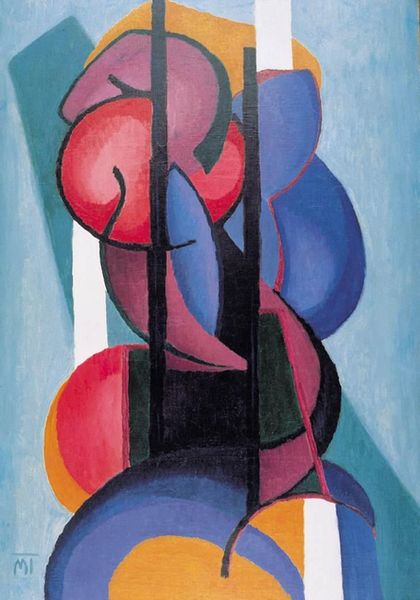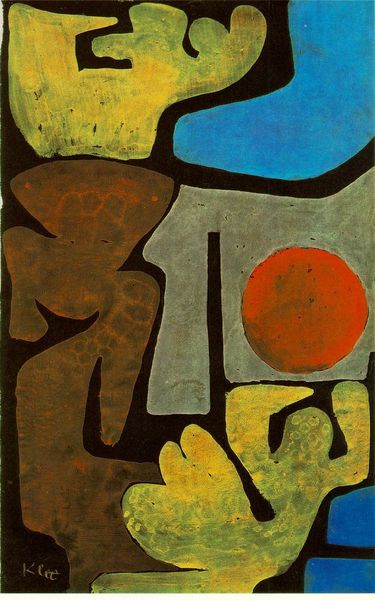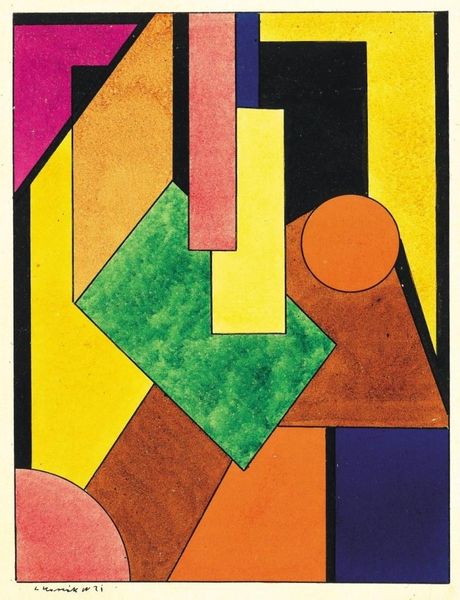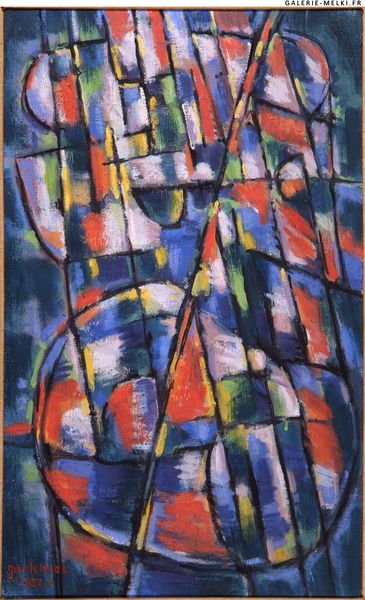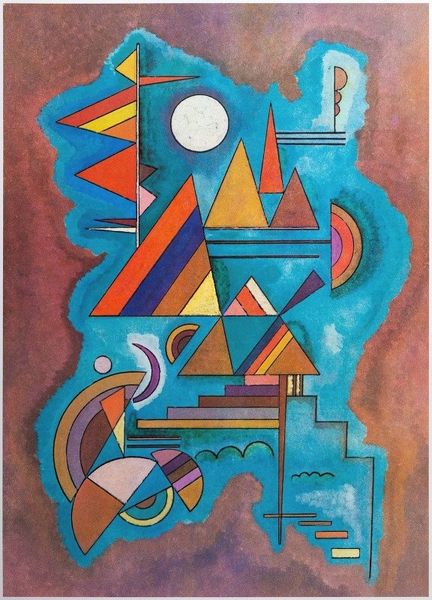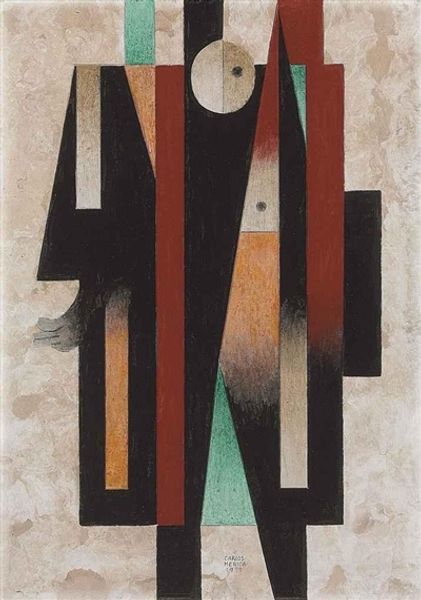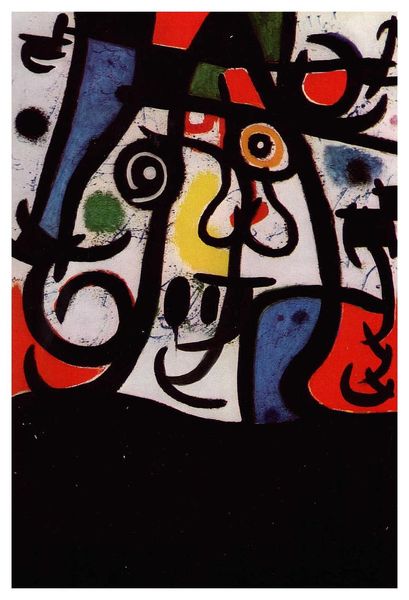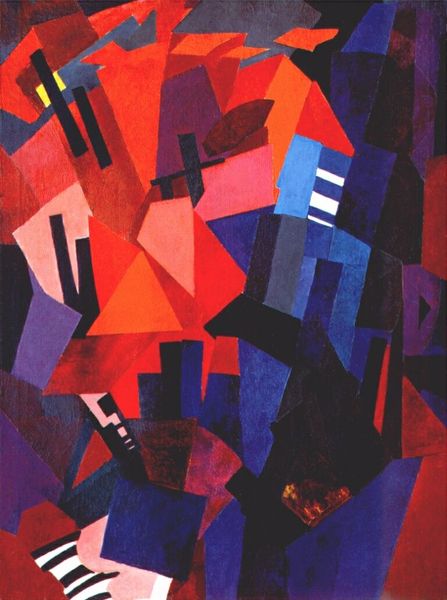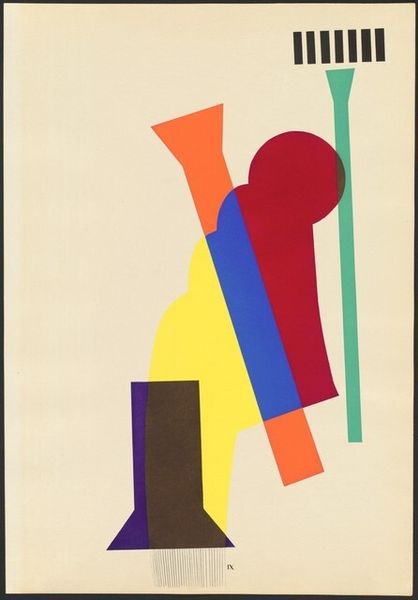
Copyright: Carlos Merida,Fair Use
Curator: We're now looking at Carlos Merida’s "A hymn to the Shulamite," created in 1982. It's a mixed media piece combining printmaking, oils and acrylics to stunning effect. Editor: My first impression is one of guarded optimism, even joy. The cool blues are hemmed in by assertive reds, all under this floating, dreamlike orb. Curator: Interesting. For me, it’s more about the production of this tension, this liminal space. How the acrylics and oils interact on the print surface, disrupting traditional hierarchies of materials and labor. There’s a flatness, almost like it wants to be manufactured, even though it's undeniably hand-worked. Editor: I can see that. But doesn’t the title also pull us towards a specific reading? The Shulamite woman from the Song of Songs is an enduring symbol of feminine beauty, love, and even spiritual fulfillment. Merida's geometric figures, rendered in vivid colors, might be interpreted as a contemporary reimagining of these archetypal themes. Curator: Potentially. However, even ancient symbolism becomes subject to shifts in social value. Consider the use of printmaking – the replication of imagery disrupts ideas of singular creative genius, echoing Pop Art’s concerns with reproducibility and commodity culture. It brings into question the individual creator versus mechanical production of imagery, the aura versus the artwork's practical circulation within the art market. Editor: The horizontal lines act as boundaries or perhaps even stages. The red form at right almost gestures, offering something with that suggestive shape… is it a wing, a flame, a hand? Merida is inviting us to read the relationship between those visual signs, between geometry and a call to something more human. Curator: Yes, but notice how those geometric shapes are also quite… standard. These are accessible forms, reproduced and available to many, bringing art closer to everyday material existence. There’s nothing traditionally ‘high-art’ about how it's made. Editor: Perhaps Merida offers us a challenge. It requires us to not only decode symbols, but acknowledge how context shapes their very meaning. This piece exists on the line between the classical and modern. Curator: Indeed, it demonstrates how all art is subject to processes, not just inspiration. I will look at oil and pigment blends in paint much differently. Editor: And I find that the memory of the Shulamite, an embrace through imagery that might otherwise remain unspoken, can open channels for further exploration. Thank you.
Comments
No comments
Be the first to comment and join the conversation on the ultimate creative platform.

